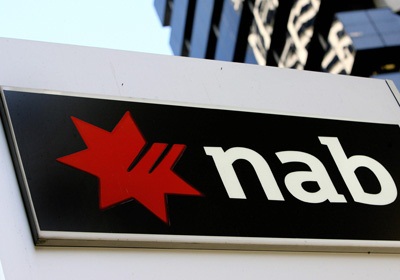The NAB Residential Property Survey Report for Q1 2016

At the end of each quarter, the National Australia Bank (NAB) publishes an update on residential property in Australia. They base their findings on a survey of approximately 300 respondents consisting of real estate agents, property managers, developers, asset and fund managers, valuers and property owners.
NAB released the first quarter 2016 report last week, which you can download here. It contains statistics on buyer activity for the first three months of 2016, as well as forecasts for the rest of this year. To compare these latest findings to the previous quarter, you can read my commentary on the Q4 2015 report.
Here are the top three insights I gleaned from NAB’s latest residential property survey:
1. High prices, Future Income Concerns and Tightening Credit Appear to be the Greatest Constraints in the Property Market.
NAB reports separate statistics for new developments and existing homes, as well as for first home buyers, owner-occupiers, local investors and foreign investors. By segmenting the data, readers can gain a clearer picture of where market demand lies. We can also see how each segment faces differing challenges to growth.
New Development
In the new home market, first home buyers increased their presence to 14.4 percent of total purchases, up from 10.9 percent in the previous quarter. Demand from owner-occupiers fell a few points, but surprisingly, local investors picked up the slack, increasing their share to 24 percent of total new property demand.
 One notable insight is the massive jump in local investor demand within Victoria. Investors snapped up a whopping 43.8 percent of new properties in the state, up from 25 percent in the previous quarter.
One notable insight is the massive jump in local investor demand within Victoria. Investors snapped up a whopping 43.8 percent of new properties in the state, up from 25 percent in the previous quarter.
NAB asks real estate professionals to rank the impact of seven different possible constraints upon new housing development. Here they are in order from greatest to least:
- Housing affordability
- Tight credit
- Sustainability of house price gains
- Construction costs
- Lack of development sites
- Rising interest rates
- Labour availability
In the established home market, first home buyers were less active, accounting for 17.6 percent of demand. Owner-occupiers made up the largest segment of demand at 42.5 percent, up slightly from the previous quarter. Local investors were also slightly more active in the past quarter, contributing 20.5 percent of existing property purchases.
Established Homes
The established home market faces the same resistance to growth as the new home market. Here are the top six constraints, as perceived by real estate professionals:
- Employment security
- Access to credit
- Level of prices
- Relative returns on other investments
- Lack of stock
- Rising interest rates
Home buyer demand in both segments of the market appears to be primarily driven by low borrowing costs, with little borrower concern for the future costs of servicing debt.
2. Fewer Foreigners are Investing in Australia, But Existing Demand has Shifted to Queensland.
 Nationwide foreign investment in new and established properties dropped to its lowest point since mid-2014. Oversees buyers made up only 11.8 percent of demand for new homes, down from 14.4 percent in the previous quarter. In the existing home market, demand dropped from 8.6 percent to 7.2 percent.
Nationwide foreign investment in new and established properties dropped to its lowest point since mid-2014. Oversees buyers made up only 11.8 percent of demand for new homes, down from 14.4 percent in the previous quarter. In the existing home market, demand dropped from 8.6 percent to 7.2 percent.
The Sunshine State was a big standout however, as demand from overseas investors increased in Queensland by one point, to 21.9 percent. This is approximately twice the demand Victoria and New South Wales is now attracting from foreign buyers.
Apartments continue to be a huge draw for overseas purchasers, making up a little over half of the total demand. In Queensland, the figure is approaching 60 percent. Even in Victoria, where news of a supply glut persists in the media, foreigners purchased nearly 40 percent of new apartments.
The shift away from Victoria is likely to continue as the state just announced an increase in the foreign investor surcharge from three percent to seven percent.
3. NAB Economists See a Slightly Brighter Future for Real Estate, at Least in Some States.
The outlook after the December quarter was a bleak one-percent capital growth across Australia through 2016. Thanks to a stronger than expected start to the year, NAB has now revised their forecast up to 1.5 percent. However, the bank conceded, “the housing market is expected to continue losing momentum going forward as credit restrictions on investors and worsening affordability bites.”
NAB economists are most bullish on Brisbane and Melbourne. They tip Brisbane house prices to rise by 2.6 percent in 2016, while Melbourne is expected to grow by 2.3 percent.
 Sydney, on the other hand, is only forecast to see a moderate growth of 1.5 percent for the year. The Adelaide market is expected to remain flat, with a negligible 0.2 percent rise. Perth is projected to move backwards, depreciating by a further 3 percent.
Sydney, on the other hand, is only forecast to see a moderate growth of 1.5 percent for the year. The Adelaide market is expected to remain flat, with a negligible 0.2 percent rise. Perth is projected to move backwards, depreciating by a further 3 percent.
What about all the talk of a collapse in property prices? While NAB agrees that strong growth in recent years has increased the risk of a more severe deterioration in prices, they see the chances as quite remote. Risk factors to watch out for include rising unemployment, a wave Chinese investors selling, or a sharp increase in interest rates.
Comments
Got something to say? Post a comment...
You must be logged in to post a comment.





Hi Jason,
This sounds worrying – “One notable insight is the massive jump in local investor demand within Victoria. Investors snapped up a whopping 43.8 percent of new properties in the state, up from 25 percent in the previous quarter.”
It almost seems like the old Army joke – “They called for volunteers to step forward, and everyone else in my platoon took a step back!”
Are these investors “making up numbers” because of pre-sold OTP’s settling, while every other buyer (who has a choice) are choosing to step backward???
Benny
Hi Jason,
I wonder how much we can trust to the bank’s statistics anyway…..
Good point.
I think we can trust the reporting of the historical data collected, but perhaps not their outlook on the future. Banks need to come across at least moderately bullish to keep shareholders optimistic about the future. Bank profitability is dependent on perpetual credit growth, something that’s impossible when people don’t want to buy real estate.